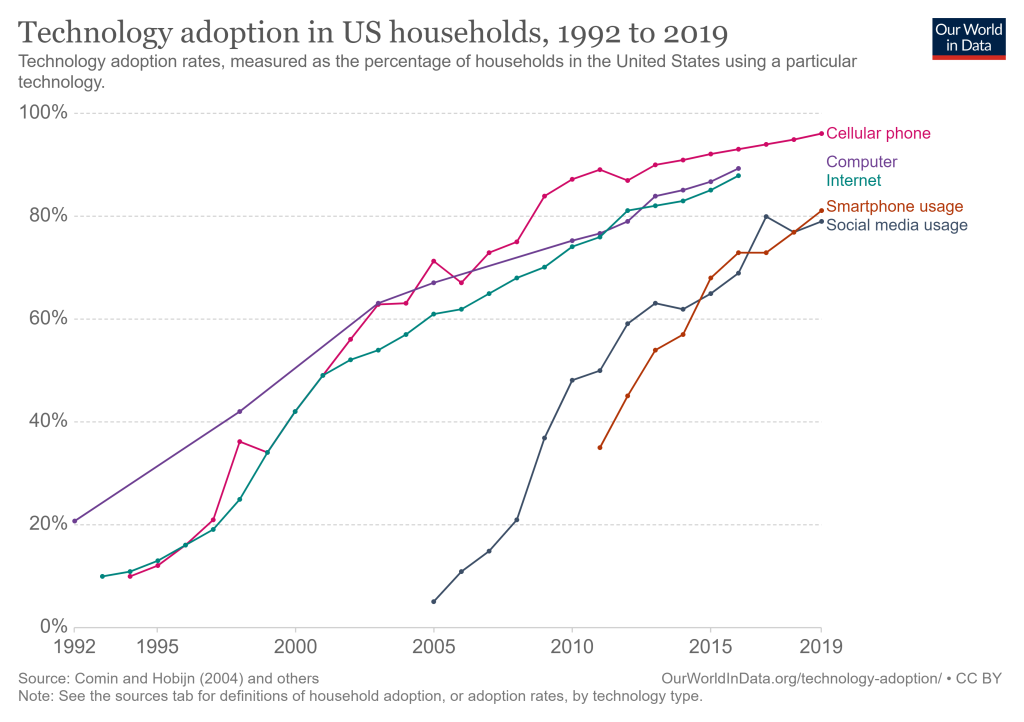It’s hard to believe that there was ever a time when things like cell phones, cars, the internet, and computers weren’t a part of our everyday lives. But all of these technologies had to start somewhere. So, how long does it typically take for society to adopt a new form of technology? Let’s take a look at some examples.
It took approximately 25 years for cell phones to achieve mass adoption. The first cell phone was introduced in 1973 but it wasn’t until 1998 that 50% of Americans owned a cell phone. Today, over 96% of Americans own a cell phone. For many, it’s hard to imagine life without one.
Cars achieved mass adoption even faster than cell phones did. It took approximately 15 years for cars to go from being a newfangled invention to an essential part of everyday life. The first car was introduced in 1886 but it wasn’t until 1901 that 41% of American households owned one. Today, 94% of American households own at least one car.
The internet achieved mass adoption even faster than cars did. It took approximately 10 years for the internet to go from being a newfangled invention to an essential part of everyday life. The first internet-connected computer was introduced in 1969 but it wasn’t until 1979 that 40% of American households had one. Today, 81% of American households have access to the internet.
Just like the internet, computers achieved mass adoption in just 10 years. The first personal computer was introduced in 1975 but it wasn’t until 1985 that 38% of American households had one. Today, 77% of American households own a computer.

It takes time for new technologies to be adopted on a broad scale, and cryptocurrencies are no different. Singapore-based blockchain firm TripleA estimated that as of 2022, the global crypto ownership rate is around 4.2%. Crypto assets are still relatively new and unfamiliar to most people. This new category of assets is often seen as volatile and risky investments, which has deterred some people from getting involved. However, as crypto assets have become more mainstream, more people are beginning to see them as viable investment options. In addition, the rise of platforms like Bitcoin and Ethereum has made it easier for people to get started with crypto assets. As crypto becomes more accessible and less risky, it is likely that adoption will continue to grow.
It seems that society is adopting new technologies faster and faster as time goes on. What used to take 25 years now takes 10 years or less. As we become more and more connected as a society, we are becoming more curious about the world around us and the possibilities that new technologies can bring. Many believe crypto is next on the list of new technologies that will impact the way we live in the future. Much to the tune of how cellphones, cars, computers, and the internet impacted the way we live today. With that said, there’s no telling what new technology will achieve mass adoption next but one thing is for sure: we’re always moving forward.
